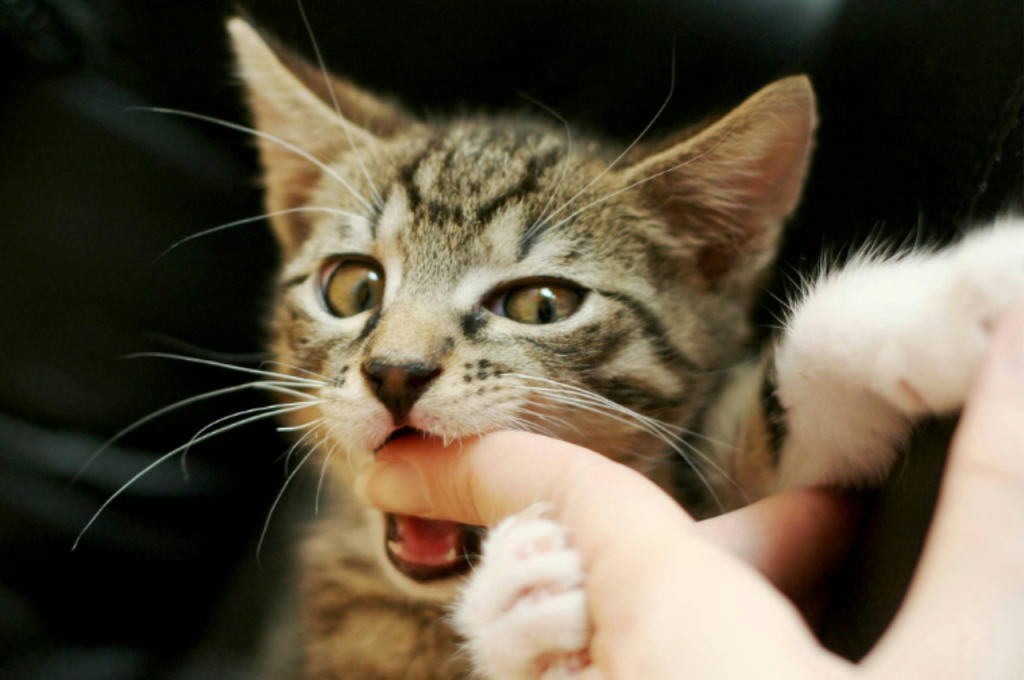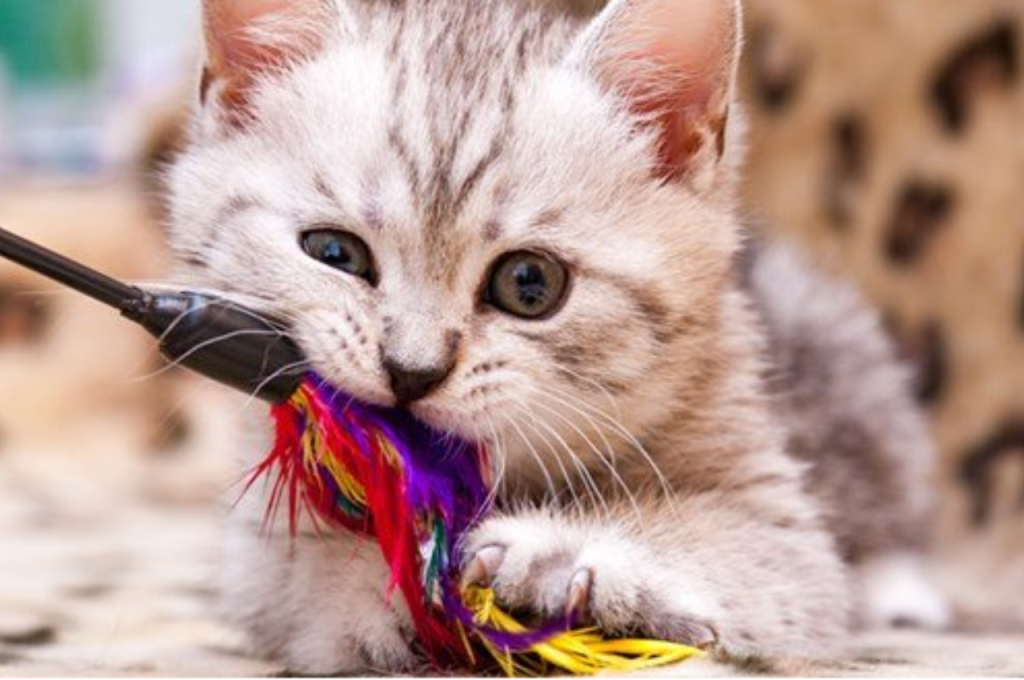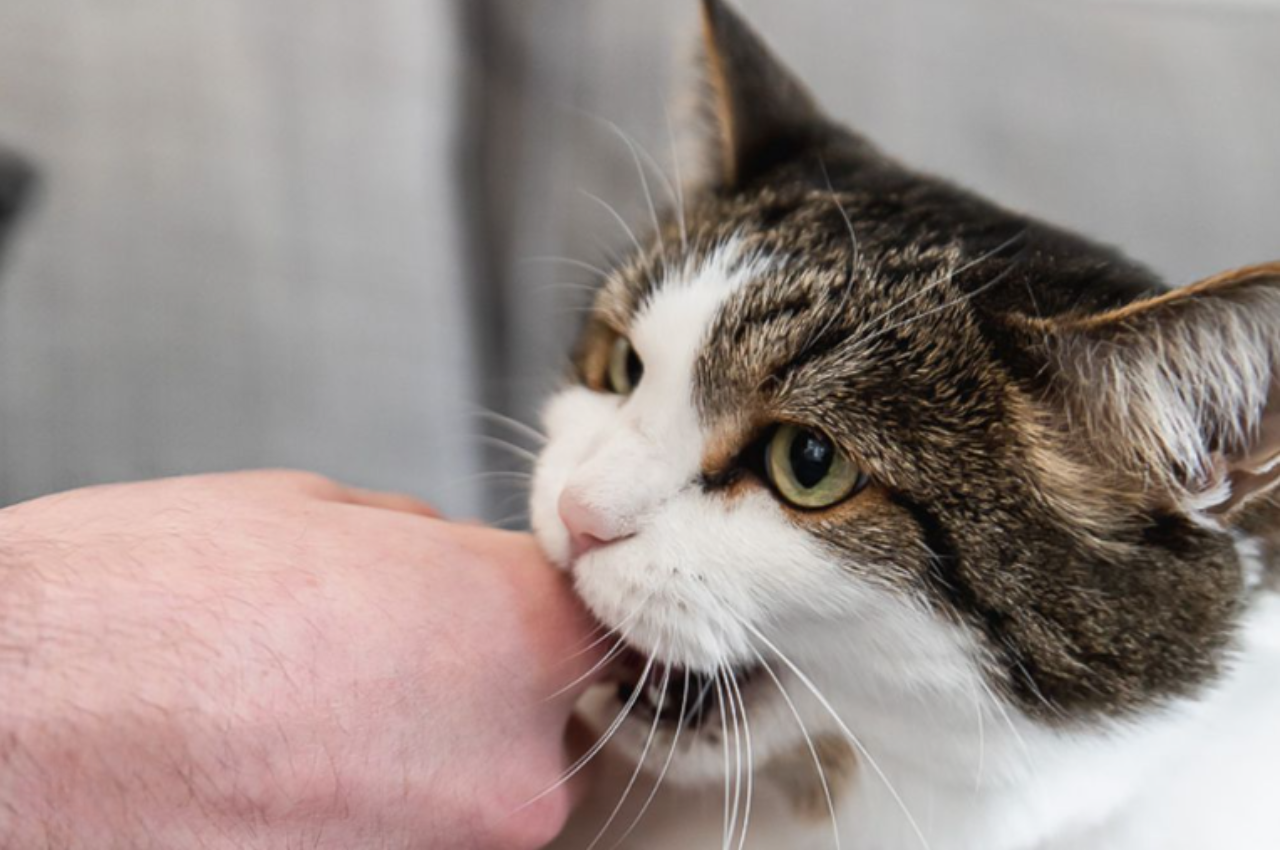To train a kitten not to bite, provide appropriate toys for biting and redirect the behavior. Consistent positive reinforcement is essential for effective training. Kittens naturally explore the world using their mouths and teeth, but it’s important to teach them appropriate behavior to prevent biting issues as they grow. Understanding why kittens bite, such as playfulness or teething, can help in addressing the behavior.
Using interactive toys and providing regular playtime can help redirect the biting behavior. Additionally, avoiding rough play and reinforcing good behavior with treats or praise can also contribute to successful training. By being patient and consistent, you can train your kitten not to bite effectively.
The Importance of Training a Kitten
When it comes to bringing a new kitten into your home, training should be a top priority. One of the most essential aspects of training for any cat owner is teaching their kitten not to bite. Kitten biting can be cute and harmless at first, but it can quickly turn into an issue if not addressed early on. By properly training your kitten, you can create a safe environment for everyone involved and build a strong bond with your furry friend.

Creating a Safe Environment
Creating a safe environment is the first step in training your kitten not to bite. Kittens are naturally curious, and they explore the world around them with their mouths. They may nibble or play bite as they learn boundaries. To prevent harm and redirect their behavior, it’s important to:
- Provide plenty of toys and interactive play opportunities to keep your kitten mentally and physically stimulated. This will help them release their energy in a constructive way.
- Use positive reinforcement by rewarding your kitten with treats or verbal praise when they interact with toys instead of biting on your hands or feet.
- Avoid using your hands or feet as playthings. This can confuse your kitten and may encourage them to bite inappropriately.
Building a Bond with Your Kitten
Building a strong bond with your kitten is crucial for successful training and overall wellbeing. By establishing a deep connection, you’ll be able to effectively communicate and teach them appropriate behaviors. Here are a few ways to build that special bond:
- Spend quality time with your kitten every day. Engage in interactive play sessions, gentle petting, and cuddling. This will help them feel loved, secure, and more inclined to listen to you.
- Discover your kitten’s preferences and cater to their needs. Each cat is unique, so paying attention to their favorite toys, treats, and places to relax will help strengthen your bond.
- Find a comfortable routine that includes regular feeding, grooming, and playtime. Consistency will help your kitten feel secure and confident in their environment.
Training a kitten not to bite takes time and patience, but the efforts are well worth it. By creating a safe environment and building a strong bond, you’ll establish a foundation for a well-behaved and happy cat. Remember, positive reinforcement and gentleness are key when teaching your kitten appropriate behaviors. With love and guidance, your kitten will learn to interact with you and others without using their sharp little teeth.
Understanding Kitten Behavior
Understanding kitten behavior is crucial when learning how to train a kitten not to bite. By observing their natural instincts and playful tendencies, you can implement effective training techniques that encourage gentle behavior and discourage biting. Knowing what drives your kitten’s actions will help you tailor your approach, ensuring a harmonious relationship between you and your furry friend.
The Natural Instinct to Bite
Kittens have a natural instinct to bite as part of their playful behavior.Biting is a way for them to explore their environment and interact with their surroundings.When kittens play, they use their mouths to simulate hunting and practice skills for survival.
Identifying Triggers For Biting
Identifying triggers for biting is essential in learning how to train a kitten not to bite. Kittens often bite due to teething, overstimulation, or feeling threatened. By recognizing these triggers, you can create a more suitable environment and use appropriate training techniques to reduce biting incidents. Understanding what prompts your kitten to bite is the first step toward effective and gentle discipline.
Positive Reinforcement Techniques
Train your kitten not to bite using positive reinforcement techniques. Use rewards like treats and toys to encourage good behavior, and redirect their attention when they start biting. Consistency and patience are key to effectively using positive reinforcement in training your kitten not to bite.
Training a kitten not to bite can be an essential part of their development. Positive reinforcement techniques can effectively encourage proper behavior in kittens without resorting to punishment. Using rewards and treats and clicker training for bite inhibition are two effective methods for teaching your kitten not to bite.
Using Rewards and Treats
Using rewards and treats can be a powerful way to train your kitten not to bite. By rewarding good behavior with treats, you can encourage your kitten to repeat those behaviors. When your kitten refrains from biting and instead engages in appropriate play, immediately praise them and offer a small treat. Be consistent with this technique to reinforce the desired behavior.
Clicker Training for Bite Inhibition
Clicker training is a popular method for teaching bite inhibition to kittens. When your kitten begins to bite, make a sharp noise to startle them, then immediately redirect their attention to a suitable toy. Click the clicker once the kitten begins to play with the toy instead of biting.

Eventually, the clicker becomes associated with the desired behavior, and the kitten will learn that play without biting is rewarding. These positive reinforcement techniques can help shape your kitten’s behavior in a positive and effective way, promoting a happy and well-behaved feline companion.
Redirecting Unwanted Behavior
Redirecting unwanted behavior in kittens is crucial for their development. By providing appropriate guidance, you can effectively teach your kitten not to bite.
Providing Appropriate Chew Toys
Choose soft toys or items specifically designed for kittens. Ensure toys are safe and appealing for your kitten to chew on.
Distracting with Playtime
Engage your kitten with interactive play sessions. Use wand toys or laser pointers to redirect their attention when they attempt to bite.
Consistency and Patience
Training a kitten not to bite requires a lot of consistency and patience. Kittens can be naturally curious and playful, and it’s important to teach them appropriate behaviors to interact with people. By establishing clear boundaries and reinforcing training daily, you can guide your kitten to develop gentle and non-aggressive behavior.
Setting Clear Boundaries
Setting clear boundaries is essential in training a kitten not to bite. Provide your kitten with appropriate toys to chew on and discourage biting hands or feet. When your kitten bites, say “no” firmly and then redirect their attention to a chew toy. This consistent response will help the kitten understand what behaviors are not acceptable.
Reinforcing Training Daily
Reinforcing training daily is crucial for consistent progress. Spend time interacting with your kitten and rewarding gentle behavior. Use treats and positive reinforcement to encourage the kitten to play without biting. Over time, your kitten will learn that gentle play is more rewarding than biting.
Avoiding Punishment and Physical Discipline
To train a kitten not to bite, avoid punishment and physical discipline. Utilize positive reinforcement with treats and toys when the kitten displays gentle behavior. Consistency and patience are key in redirecting their biting instincts towards appropriate items.
The Risks of Physical Discipline
In the process of training your kitten not to bite, it is essential to avoid punishment and physical discipline. Physical discipline, such as hitting or slapping your kitten, can have detrimental effects on their overall wellbeing and the bond between you and your furry friend. It can lead to fear, anxiety, and even aggressive behavior in your kitten. Additionally, physical discipline may cause your kitten to become defensive and more likely to bite in self-defense. To ensure a positive and effective training experience, it’s crucial to explore alternative strategies for discouraging biting.
Alternative Strategies for Discouraging Biting
Instead of resorting to physical discipline, there are alternative strategies that can be employed to discourage biting in your kitten. These strategies are focused on positive reinforcement and redirecting your kitten’s behavior towards appropriate play and interaction.
1. Use positive reinforcement: When your kitten displays good behavior, such as not biting, reward them with praise and treats. This encourages them to repeat the desirable behavior and associate it with positive outcomes.
2. Provide appropriate toys: Ensure your kitten has access to a variety of interactive toys, such as chew toys and feather wands. Engaging your kitten in play with these toys not only redirects their biting behavior onto acceptable objects but also helps release their excess energy.
3. Redirect their attention: If your kitten starts to bite during playtime or interaction, gently redirect their attention to a toy or an appropriate object. This teaches them that biting humans is not acceptable behavior while still allowing them to engage in natural playful behavior.
4.Utilize time-outs: If your kitten continues to bite despite your efforts, use time-outs as a form of non-physical discipline. When they bite, calmly and gently remove yourself from their presence for a short period. This helps your kitten understand that biting results in the loss of attention and playtime, reinforcing the message that biting is undesirable.
5.Consistency and patience: Training takes time, and kittens may need repeated exposure to these alternative strategies before they fully grasp what is expected of them. Be consistent in your approach and patient with your kitten’s progress. Celebrate small victories and remain dedicated to creating a positive learning environment. By avoiding punishment and physical discipline and implementing these alternative strategies, you can train your kitten not to bite effectively while promoting a loving and trusting bond between you and your furry companion.
Seeking Professional Help
Training a kitten not to bite can be challenging, but seeking professional help can provide effective guidance and techniques. With the expertise of professionals, you can learn the best methods to redirect your kitten’s behavior and promote a harmonious relationship.
Consulting with a Veterinarian
If you are having trouble training your kitten not to bite, seeking professional help can be a great option. A veterinarian can provide valuable guidance and insight into your kitten’s behavior. They can examine your kitten and rule out any underlying medical issues that may be causing them to bite. Additionally, a veterinarian can recommend personalized training techniques that are tailored to your kitten’s specific needs. Consulting with a veterinarian is an important step in addressing your kitten’s biting behavior.

Working with a Certified Animal Behaviorist
A certified animal behaviorist is an expert in understanding and modifying animal behavior. They have specialized knowledge and training in dealing with various behavioral issues, including biting. If your kitten’s biting behavior persists despite your efforts, collaborating with a certified animal behaviorist can be highly beneficial. These professionals can assess your kitten’s behavior and develop a customized behavior modification plan. They can also provide hands-on guidance on how to train your kitten not to bite. Remember that each kitten is unique, and what works for one may not work for another. Therefore, seeking professional help is crucial in ensuring effective and personalized training for your kitten’s biting behavior.
Conclusion
Training a kitten not to bite takes patience and consistency. Positive reinforcement and redirection can help modify their behavior. Remember, kittens are learning and need gentle guidance. By using these techniques, you can foster a loving and well-behaved feline companion.
